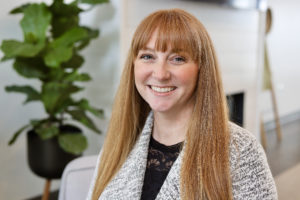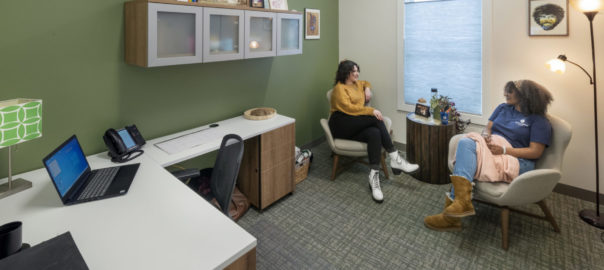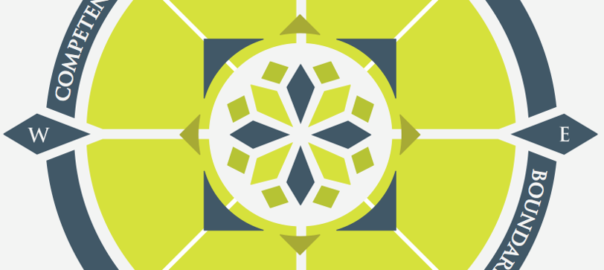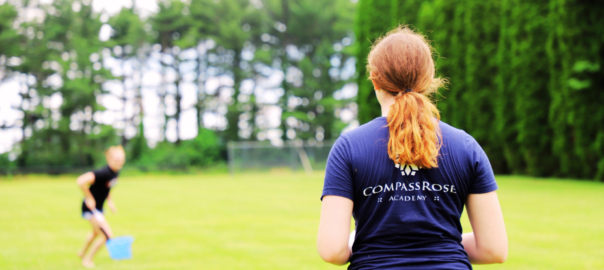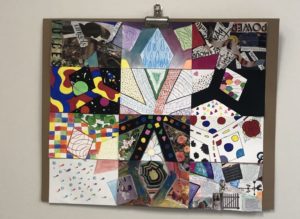“I’m not in the business of helping people cope.” This is a phrase I’ve heard many times from Dr. John Townsend, and we at Compass Rose Academy (CRA) could not agree more. Now, of course coping is necessary and helpful. We would not refute that. People do what they must to survive. But inevitably, coping methods that once proved effective stop working. Another obstacle arises, there’s a loss, stressor, or some need for adjustment and that coping strategy is no longer effective.
That’s why at CRA we don’t believe in simply helping people cope; instead, we help people heal and grow using the Growth Model. The Growth Model (developed by Dr. Henry Cloud & Dr. John Townsend) is a developmental model of therapy that works to develop a person’s internal capacities to successfully manage the challenges of life (Cloud 2018; Townsend, 2019). It goes beneath the behaviors to what’s driving those behaviors. Instead of focusing solely on external behavioral changes or willful changes in thoughts, the Growth Model aims to build in new capacities at a much deeper level. The beauty is that these don’t require ongoing maintenance! While coping requires constant effort to manage feelings/thoughts/behaviors, this strategy creates an effortless and lasting change.
Both neuroscience and scripture support this model, as it follows natural human development (Cloud & Townsend, 2001). It’s how humans were designed to grow and heal. It asserts that growth and development happen in relationship. For healthy development, a person receives the nutrients of grace and truth over time, providing the optimal conditions for growth through 4 developmental stages: Bonding/Attachment, Boundaries/Differentiation, Reality/Integration & Competence/Adulthood.
The problem is that grace, truth, and time are not always accessible, and due to brokenness in our world and human limitations, a person inevitably experiences deficits in their natural development. When these ingredients are lacking, a person experiences painful emotional and relational realities, which create unhealthy beliefs on a neurological level that then drive dysfunction (largely subconsciously).
These occur within each of the 4 developmental capacities. Some examples are as follows:
bonding/attachment
“People aren’t safe – I need to handle life alone”
boundaries/differentiation
“I’m not okay if others aren’t okay with me – I can’t be different or set limits”
reality/integration
“These ‘bad parts’ I have make me bad; I feel shame”
competence/adulthood
“I’m less-than, and have no power” (victim mindset or entitlement)
Since these damaging core learnings that drive symptoms/behavior were created in relationship, the key to healing is, likewise, relational. Through this model, we are able to create growth and healing by creating mismatching experiences on the limbic level in the brain. These mismatching experiences replace the previously held, damaging learning, all through connection and in relationship.
This is done by accessing the core emotional/relational learning through affect (emotion) using an array of skills, starting with attunement. We then create healing affective experiences, which replace the old learning that drove symptoms. “People aren’t safe” is replaced experientially with “I can express needs and get them met in healthy relationships.” “I am bad,” transforms to “I have good and bad parts, and I am loved and drawn close in the midst of both.” This model works to literally rewire the neural pathways and erase the previous learning with a new one in the respective developmental capacity, and can only be done through intensive emotional and relational experiences (Ecker et. al., 2012).
While this simplistic overview of The Growth Model does not point to the many scientific theories and studies influencing and supporting its work, does not delve into the complexity of skills required to identify the developmental deficit, access its core learning, and replace it experientially with a mismatching experience, it does offer a 30,000 foot view of the healing accessible to our clients through The Growth Model. With true growth and healing possible, you can see why we refuse to settle for simply helping clients cope!
-By CRA Director of Admissions Madeline Spring, MA, LMHC
Cloud, H (2018). Changes that heal. Zondervan.
Could, H & Townsend, J (2001). How people grow: What the Bible reveals about personal growth. Zondervan.
Ecker, B., Ticic, R., Hulley, L., & Sibson, P., Martignetti, C. A., Geoghegan, N., & Connor, T. A (Collaborators). (2012). Unlocking the emotional brain: Eliminating symptoms at their roots using memory reconsolidation. Routledge/Taylor & Francis Group.
Townsend, J. (2019). People fuel: Fill your tank for life, love and leadership. Zondervan.
